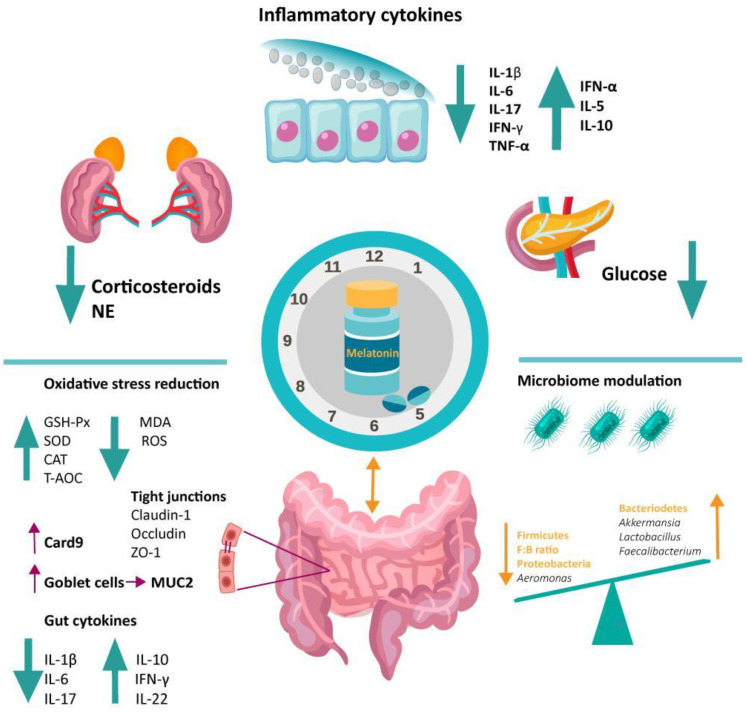Figure 3.
Melatonin’s beneficial systemic and GI effects in sleep disorders. In the gut, melatonin: (i) reestablishes the intestinal microbiome—decreases the Firmicutes to Bacteroidetes ratio and Proteobacteria at the phylum level; increases Akkermansia, Lactobacillus, and Faecalibacterium; and decreases Aeromonas at the genus level; (ii) restores the barrier integrity by increasing tight junction proteins (claudin-1, occludin, ZO-1), goblet cell numbers (MUC2), and CARD9; (iii) reduces the oxidative stress by increasing the levels of the antioxidant enzymes (GSH-Px, SOD, CAT), T-AOC and decreasing MDA, ROS; (iv) diminishes the inflammatory state by decreasing the proinflammatory cytokine (IL-1ß, IL-6, IL-17) and increasing anti-inflammatory ones (IL-10, IFN-γ, IL-22). At the systemic level, melatonin: (i) reduces the stress hormones (corticosterone, NE); (ii) diminishes the inflammatory systemic state by decreasing the inflammatory cytokines (IL-1β, IL-6, IL-17, TNF-α, INF-γ), and increasing the anti-inflammatory ones (IL-5, IL-10, IFN-α); (iii) restores glucose homeostasis by decreasing the glucose levels. Abbreviations: ↑, Increase; ↓, Decrease; ZO-1, Zonula Occludens-1; MUC2, Mucin 2, oligomeric mucus gel-forming; GSH-Px, glutathione peroxidase; SOD, superoxide dismutase; CAT, catalase; T-AOC, total antioxidant capability; MDA, malondialdehyde; ROS, reactive oxygen species; TNF-α, tumor necrosis factor-α; IL, interleukin; IFN- γ, interferon γ; CARD9, Caspase Recruitment Domain Family Member 9; NE, norepinephrine.

